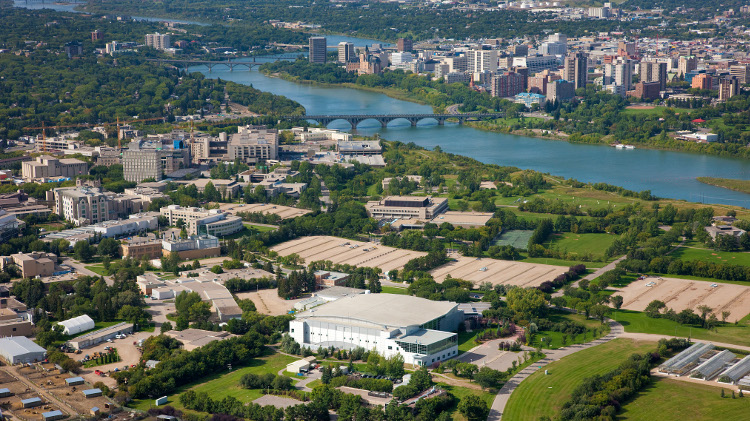If you would like to pitch a story idea, please send us a short (~100 word) summary (specifics below). A CIM Magazine editor may follow up for more specific details. Once the topic and angle are agreed upon, a deadline will be set.
All of our articles are written by staff and independent freelance writers, with the exception of our columns section, which is written by industry experts.
After the first draft is submitted by the writer, the article will go through the CIM Magazine editorial process, which includes, but is not limited to, editors reviewing the article for logic, flow, grammar and style. The editors may ask writers to clarify points, provide more detail, or define certain terms as they deem necessary.
While we can cover very technical topics, we try to approach and communicate them in everyday language. Our goal is to provide content that anyone with a general background in mining can understand.
You can submit story proposals to editor@cim.org. If we do decide to run a piece you proposed, a section editor will contact you. The freelance rate will be negotiated once a pitch has been accepted. Please have a look at the section descriptions and examples for a better idea of what we might look for in a pitch.
Tools of the Trade
This section highlights new and notable products that are on the market and serve the mining industry. We usually compile three for each print issue of the magazine. The 150-word blurbs are intended to be informational, not promotional, and give an overview of the product itself (what equipment is involved and how it works), how the product is used in mining operations and how it solves a problem that users are currently facing.
Developments
This section offers comprehensive coverage of the latest mining news, including developments in law and regulation, commodities and the markets, finance, exploration, projects and operations. Our stories range from 400-word news briefs to 1,000-word news analysis pieces, which should have a minimum of 2-3 sources. For this section, we’re most likely to accept stories that use a new development to talk about a larger trend.
Examples:
Federal government promises loan guarantee program will enable Indigenous equity participation
Tailings trial: A big test for carbon capture in tailings
Powering forward: Nouveau Monde Graphite will begin piloting an electric loader at its graphite mine
Indigenous Participation in Mining
Each year, we run a special editorial series that focuses on a specific topic. In 2025, the Indigenous Participation in Mining series will explore the people, the ideas and the models that are moving mining projects and economic reconciliation forward. These articles are roughly 1,200 words long and require a minimum of 2-3 sources. Pitches are welcome in advance as the articles tend to focus on people, programs and initiatives that are making a difference in the mining industry, which are not usually time sensitive.
Columns
Professionals from the mining industry submit columns for our magazine on their area of expertise. They are generally “argumentative” in nature (in the sense that they have a general thesis that is defended in the article) and written in a conversational tone for the layman. These articles are about 900 words long and include a headshot of the author.
Examples:
Mine development has changed. Have you noticed?
Let’s make feasibility studies realistic
Predictive decision-making for process monitoring
If you would like to pitch a story idea, please send us a short (~100 word) summary of your article that includes the central thesis statement you’ll be defending and the main points. The CIM Magazine editors may follow up for more specific details.
Once the topic and angle are agreed upon, a deadline will be set.
After the first draft is submitted by the columnist, the article will go through the CIM Magazine editorial process, which includes, but is not limited to, editors reviewing the article for logic, flow, grammar and style. The magazine editors may ask columnists to clarify points, provide more detail, or define certain terms, as they see necessary. Once the article has been through the editorial process, the article will be provided to the columnist for final approval before it is published.
Note that we try to avoid endorsing a specific product or company in the column, though we can put in the author note a link to a company.
Also note that we do not pay contributors to this section.
Upfront
The best way to think about the stories in this section is like a case study in a magazine format; they cover the solution to a particular problem. We require at least two interviews for these articles, preferably one from the mining company and one from a service provider (if applicable). We also tend to publish at least one Q&A with a subject-matter expert on a novel idea or process. These can include conversations with experts in academia, government, or industry. We try to give reporters three weeks to submit the articles in this section. The stories are about 1,500 words.
Examples:
Beyond gaming and retail applications, the virtual world is showing major promise for training in the mining sector
Why some in the mining industry are calling for a two-tiered approach to pricing nickel
Paterson & Cooke’s Maureen McGuinness discusses the evolution of backfill and the key role it has to play in mine planning (Q&A)
Feature
The longest stories in the magazine, our features cover trends on large hot-button topics. They also usually provide material for the cover of the magazine. These stories are 2,000-3,000 words. It takes a special type of reporter with a sense of narrative and the work ethic to pursue these kinds of long-form stories, and we try to give three weeks or more to make sure the stories hold together when we receive them. There is usually a good amount of coaching and editor involvement in developing the characters and helping a reporter grasp the angle we’d like to take.
Examples:
The formalization of artisanal and small-scale mining may be necessary to help meet global demand for critical minerals
From the deep sea to space, new frontiers with vast mineral resources are opening up
The mining industry is shifting from water management to water stewardship to address the global freshwater crisis
Project Profile
For the hundreds of mineral deposits that are inevitably described as “world class,” only a handful of them are actually developed into operating mines. The time between discovery and mine commissioning is usually measured in decades, so when new mines are being built or about to start producing, we want to share that with our readership. Mines are idiosyncratic, and we want to detail the engineering accomplishments and innovations that are built into each project. We sometimes also cover mine expansions, specific engineering projects at mine sites or preparations for reclamation and closure. These articles are typically around 1,500 words.
Examples:
Alamos Gold’s Island Gold mine in Ontario
Mosaic’s Esterhazy potash mine in Saskatchewan
Orano Canada and Denison Mines’ McClean Lake uranium mine in Saskatchewan
Technology Focus
In this section we look at a specific operational component (pumps, ventilation, emissions control, conveying, etc.) at a mine and focus on new technology, equipment and innovations that have been made in this area. Generally, advances will have been made to combat or mitigate specific problems and that’s usually a helpful way to introduce the subject. The Technology Focus articles run about 1,700 words in length and feature interviews with multiple sources from different companies to see what they are doing in their specific areas. Photos are also important for this section, so if you are writing a Tech Focus feature, please try to get good, hi-res shots from your sources. Sidebars, graphics, et cetera can also be helpful to illustrate some of the complex processes that might be involved in the piece.
Examples:
Techniques like artificial intelligence and machine learning are revolutionizing SAG milling
As equipment manufacturers embrace automation and data-driven decision-making, development drilling at underground mines is becoming safer, greener and more efficient
There is more to decarbonizing mines than electrifying haul trucks; integration of BEVs with full mine electrification calls for new technology
We're excited to hear from you!



